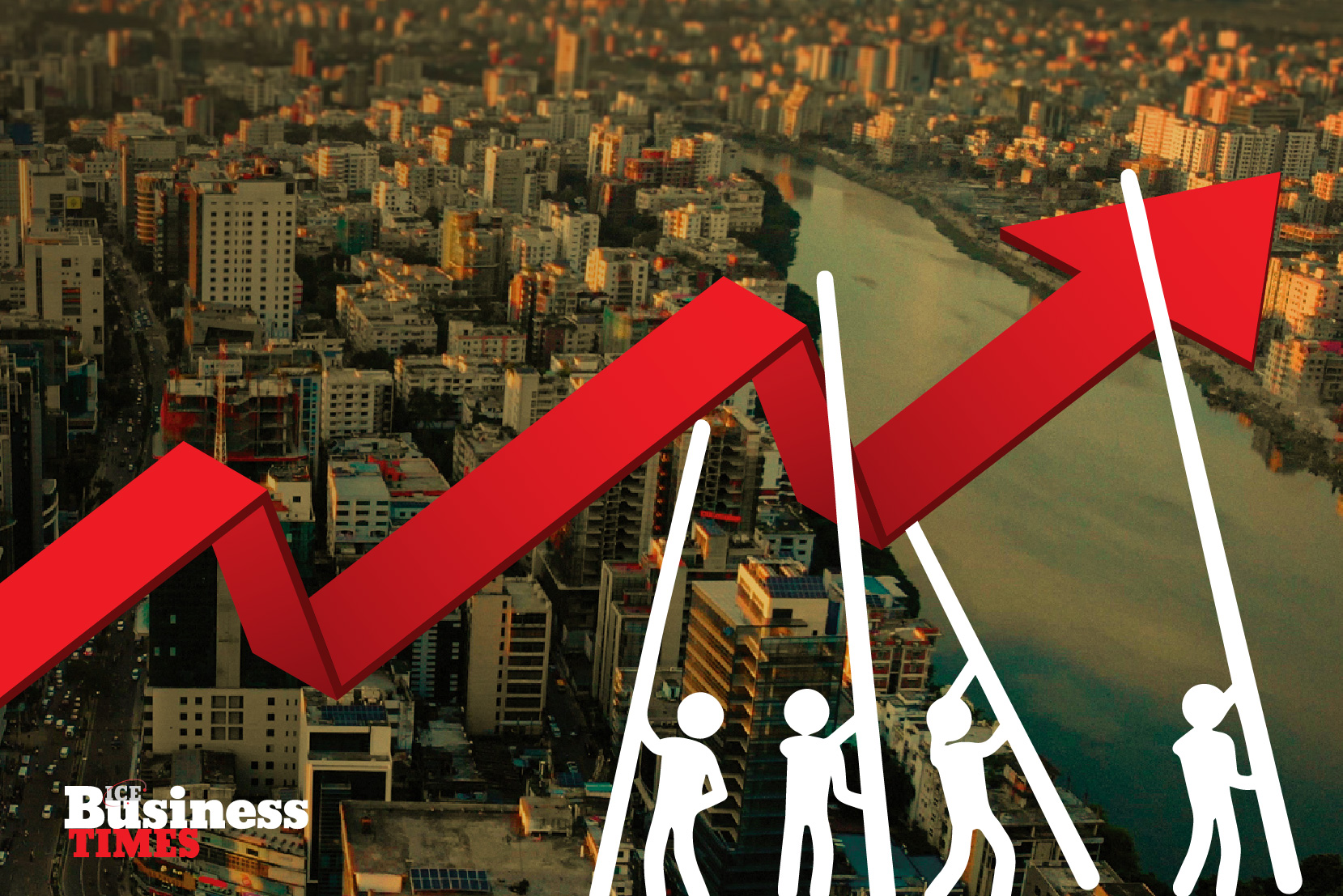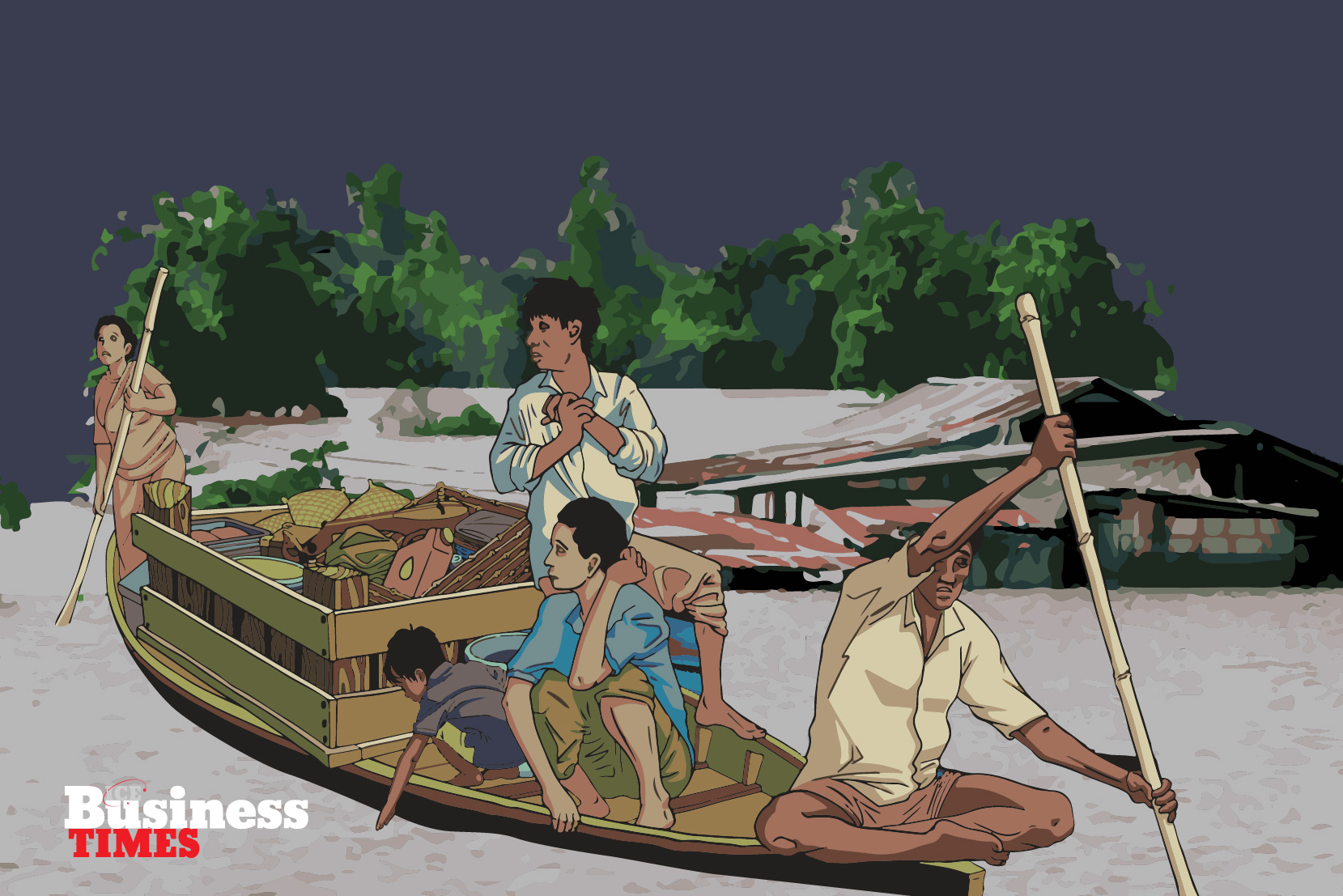Bangladesh is proving that industry can care, but fundamental challenges remain that must be addressed for true progress.
As we celebrate World Health Day on 7 April and International Mother Earth Day on 22 April this year, we should be reminded that a sick planet cannot sustain healthy individuals and that exploitation-based industries cannot guarantee resilience. These observances must always challenge us to look beyond profit, beyond interests, beyond the bottom line, to the Earth’s common future and the common good.
But for Bangladesh, that reality hit home in 2013 when Rana Plaza collapsed and killed over 1,100 and injured 2,000 more. It exposed the astronomical human cost of unbridled industrialisation. All the alarm bells were too loud to ignore.
Factories were rebuilt after that, inspections became routine, and a silent revolution began, where employees’ well-being and environmental sustainability were not being thought about as expenses but as investments of utmost priority.
Bangladesh now leads the world in green factories and is redefining industrial leadership. Yet, questions linger. Are the wages rising as fast as development? Can the companies grow without damaging the environment? And on what terms do the industries ensure that the sustainability that exists for the export markets also exists for the society in which the companies are headquartered?
FROM RISK TO RESILIENCE
In the aftermath of Rana Plaza, international pressure spawned the Accord on Fire and Building Safety and the Alliance for Bangladesh Worker Safety, which set about over 56,000 inspections of 2,400 factories, remediating over 140,000 hazards. Alliance-identified hazards have been remediated 90% to date, and Accord-identified hazards have been remediated 84% to date.
Structural reforms established the safety culture. Millions of workers were trained in fire drills, and thousands of factories now have safety committees that are led by workers. The government introduced emergency procedures and safety officers in revised labour laws and inspected more than 1,500 factories, closing 513 dangerous ones.
Empowerment came in the wake. As of 2024, the number of trade unions in the garment sector of Bangladesh has climbed to 1,300, up from virtually zero in the 1990s. Workplace injuries are compensated by the Workers’ Welfare Fund, and minimum wages have increased from BDT 3,000 to BDT 8,000.
Now Bangladesh’s RMG sector stands out as the global icon of symbiosis between industrial growth and protection of the interests of the working class.
OVER 100 FACTORIES NOW OFFER SUBSIDISED MEALS, HEALTH EDUCATION PROGRAMS, AND PRIMARY HEALTH SERVICES THAT ADDRESS THE MALNOURISHMENT THAT ONCE HIT 80% OF FEMALE EMPLOYEES.
WELLNESS AS A BUSINESS STRATEGY
Health and wellness in Bangladesh’s workforce have improved because companies have begun to recognise that healthy employees are productive employees. Over 100 factories now offer subsidised meals, health education programs, and primary health services that address the malnourishment that once hit 80% of female employees. Spurred by the Global Alliance for Improved Nutrition (GAIN) and the Workforce Nutrition Alliance, companies introduced nutrition programs that reduced anaemia by up to 22% and, in some cases, raised productivity by up to 70%.
Additional rights are being slowly introduced as well. There is a mandatory 16 weeks’ paid maternity leave and childcare centres in larger workplaces included in the Bangladesh Labour Act, 2006. Daycare facilities within workplaces and lactation rooms are now prevalent in most factories, and there are even paternity leaves and wellness workshops.
Sector leaders like the Bangladesh Garment Manufacturers and Exporters Association (BGMEA) are launching pilots on health insurance, nutrition allowance, and subsidised foods. In non-garment sectors like construction and shipbreaking, personal protective equipment (PPE), chemical safety training, and ergonomic training are being introduced. Through assistance from the International Labour Organization (ILO), the National Occupational Safety and Health Training and Research Institute now actively works to bring in long-term standards for safety.
This reorientation reflects a deeper understanding that employees aren’t a cost but rather the architects of sustainable growth.
FROM POLLUTANT TO PACESETTER
Bangladesh factories aren’t just saving labourers, they’re going green. Once synonymous with pollution, Bangladesh now has 265 environmentally friendly garment factories in the world that have been Leadership in Energy and Environmental Design (LEED)-certified, of which 60 are among the world’s top 100. These green factories use 40% less electricity, 41% less water, and have 35% less carbon output than conventional factories because of initiatives like solar panels, rainwater collection systems, and waste recycling, according to the BGMEA.
Sustainability extends itself towards buildings as well. Dyeing and textile units are also using Effluent Treatment Plants (ETPs) for treating wastewater. Circular economy systems are also picking up pace. Polyethylene Terephthalate (PET) bottles are being converted into clothes and waste clothes into yarn. However, a concern remains that just 27% of over 820,000 tonnes per year of plastic waste is being recycled.
Corporate responsibility is on the rise too. Research by Standard Chartered found that 78% of Bangladeshi multinationals will likely drop suppliers who don’t meet the 2025 carbon targets.
The message is simple. Green is no longer an option for Bangladesh’s entrepreneurs. Forward must now be the path.
BANGLADESH’S INDUSTRIALISATION HAS BEEN ACCLAIMED WORLDWIDE, YET BEHIND THE SHINY EXTERIOR OF GREEN FACTORIES AND DECENT SUPPLY CHAINS, THE OLD FAULT LINES REMAIN. FOR COMMUNITIES AND THOUSANDS OF WORKERS, THE REWARDS OF WELLNESS AND SUSTAINABILITY REMAIN OUT OF REACH.
POLICY-FACILITATED SHIFT TOWARDS RESPONSIBILITY
Spurring Bangladesh’s industrialisation is the lesser-known catalyst, policy reform and regulatory incentives. With the help of international stakeholders, the government has revised labour and environmental regulations to push industries towards cleaner and safer production.
The Environment Conservation Act came into being in the year 1995 and laid the base. Enforcement came into practice in the 2010s. One of the most significant measures taken was in 2017 when the Hazaribagh tanneries were relocated to Savar after decades-long pollution.
Labour changes picked up pace after Rana Plaza. The 2006 labour law was revised multiple times (2013–2018), simplifying union registration, mandating safety committees, and increasing injury compensation. The National Occupational Safety and Health (OSH) Policy (2013) increased the monitoring of safety, and the RMG Sustainability Council (2020) took up the responsibility of monitoring factories’ compliance. Online platforms like Mapped in Bangladesh facilitate monitoring the units that are in the informal sector.
Economic tools enabled the transition. Eco-project loans were spurred by the Green Banking Guidelines (2011) and financed by a USD 200 million Green Transformation Fund for clean tech retrofits. Tax credits and tariffs on import duties on solar equipment and modules spurred private investment.
Now that LDC graduation in 2026 approaches, upholding the General Scheme of Preferences Plus (GSP+) trade standards of the European Union is critical. All the national plans, from the Renewable Energy Policy to the Green Growth Framework, drive home one point – sustainability is no longer something one does; it’s national policy.
REDESIGNING FOR GREENER INDUSTRIES
Under the pressure of climate imperatives, Bangladesh’s industrial sectors are showing that development and environmental protection need not remain at opposite poles.
Pacing the field is the RMG sector which boasts the most LEED-certified green factories worldwide saving energy and water using innovations like rainwater collection, natural light transmission, and waste recycling.
Although still based on 90% fossil fuels, companies are using solar rooftops, green equipment, and green banking initiatives. Water treatment has also increased. ETPs are now mandatory, and several factories recycle up to 50% of their wastewater. Cleaner dyeing and enforcement are reducing pollution in rivers like the Buriganga.
BANGLADESH NOW LEADS THE WORLD IN GREEN FACTORIES AND IS REDEFINING INDUSTRIAL LEADERSHIP. YET, QUESTIONS LINGER. ARE THE WAGES RISING AS FAST AS DEVELOPMENT? CAN THE COMPANIES GROW WITHOUT DAMAGING THE ENVIRONMENT?
EXPENSES THAT UNDERLIE THE ACHIEVEMENTS
Bangladesh’s industrialisation has been acclaimed worldwide, yet behind the shiny exterior of green factories and decent supply chains, the old fault lines remain. For communities and thousands of workers, the rewards of wellness and sustainability remain out of reach.
Despite rising salaries, most garment workers are still far from earning a living wage. Subcontractor factories continue to avoid safety inspections, and unionisation efforts are often met with resistance, intimidation, and reprisals against labour activists.
Meanwhile, Dhaka, one of the world’s most polluted cities, has its air choked by emissions from brick kilns, transport, and industry. Over 90% of electricity is still produced from fossil fuels.
Toxic dumping continues in unregulated regions, and plastic and electronic waste pile up despite recycling efforts. Some factories self-certify but show little actual improvement raising concerns of greenwashing.
While rivers like the Buriganga remain vulnerable to illegal dumping, the Savar Tannery Estate’s ETP remains only partially functional, continuing to leak waste into surrounding water bodies.
To ensure Bangladesh’s green commitment holds up, enforcement, transparency, and equity must accompany ambition.
IT DEVELOPS HERE
Bangladesh’s industrial journey is only just beginning. If the last ten years were about survival and reform, the decade ahead must be about scaling transformation that’s inclusive.
For sustainability to endure, it must reach beyond export giants. Small and medium enterprises, the backbone of the local economy, need access to training, finance, and clean technology. Circular practices must scale up to prevent landfill overflow and urban waste crises.
Next is energy. Rooftop solar is increasing, but renewable expansion must accelerate, led by solar, wind, and biofuel incentives.
Water management remains critical. ETPs must function effectively and not just exist on paper. Clean water-use technologies must become the norm in textiles and leather.
But lasting change depends on people. Good wages, healthy working conditions, and worker protections must reach all factories, especially subcontractors.
Bangladesh has shown that profit and purpose can go hand in hand. If it carries forward its hard-earned lessons with equity and ambition, it won’t just be part of the future, it will help lead it.















